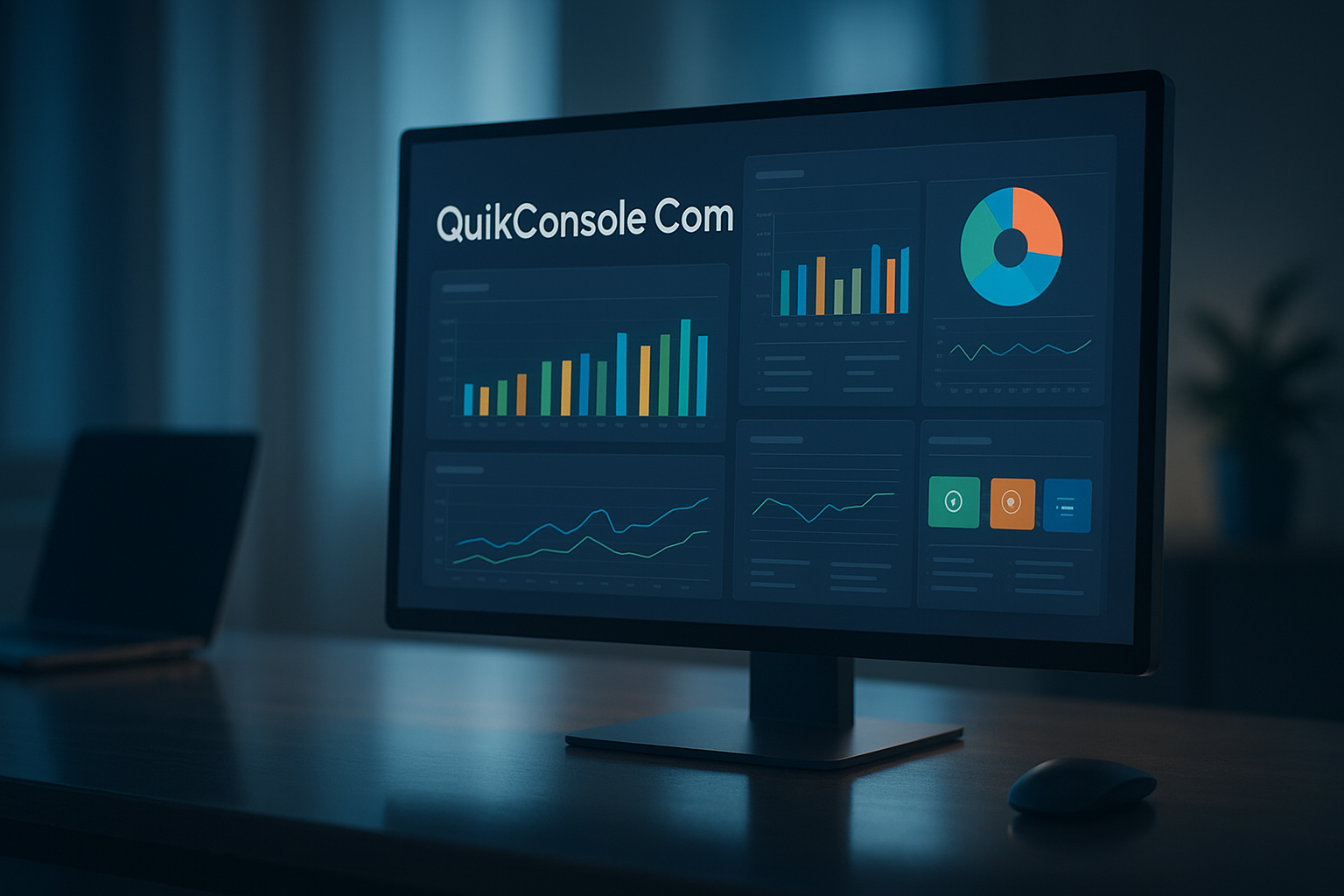In today’s rapidly evolving software landscape, staying ahead means embracing tools that not only simplify development but accelerate innovation. Enter Oxzep7 Python, a next-generation suite designed to super-charge your Python workflow. Built to combine AI-powered assistance, modular architecture, and enterprise-grade strength, Oxzep7 Python positions developers for speed, scale, and success. In this article we explore its core features, best practices, architecture, deployment strategies, real-world use-cases, and more — delivering actionable insight for teams that aim to build smarter, faster, and stronger.
What is Oxzep7 Python?
Simply put, Oxzep7 Python is a powerful development framework that blends the richness of Python’s ecosystem with modern requirements: automation, modularity, scalability, and intelligent tooling. It is not merely an IDE or a simple library; rather, it presents a full workflow approach — from prototyping to deployment — aligned with the realities of 2025 and beyond.
Through its intelligent core, Oxzep7 Python offers features such as predictive logic, real-time debugging, modular components, and built-in AI assistance. Developers familiar with traditional frameworks like Flask or FastAPI will find that Oxzep7 raises the bar by delivering both breadth and depth in tooling.
Why Choose Oxzep7 Python for Your Projects
Selecting the right framework can make or break your project timeline, maintenance effort, and scalability. Here’s why Oxzep7 Python compellingly outperforms many conventional alternatives:
- AI-Driven Productivity: The built-in assistance recognizes patterns, suggests code completions, and helps detect logic issues earlier.
- Modular Architecture: Components are plug-and-play, enabling you to build or upgrade systems without complete rewrites.
- Enterprise-Ready Scalability: Designed not just for small apps but for large systems where performance, security, and maintainability matter.
- Seamless Python Integration: Leverages the extensive Python ecosystem — from Pandas, NumPy and TensorFlow to web frameworks and DevOps tools.
- Robust Security & Reliability: Multi-layered encryption, error-handling, and monitoring are built into the workflow, reducing third-party dependencies.
Choosing Oxzep7 means adopting a future-proof foundation that addresses real world demands — not just a niche use-case.
Core Features of Oxzep7 Python

Here we dive into what makes Oxzep7 Python stand out — the concrete features that developers will actually use and love.
AI-Assisted Code Module
The framework features predictive code suggestions, real-time linting, and smart error-detection. As you work, Oxzep7 analyses patterns, flags potential bottlenecks, and assists with logic flows — helping you write cleaner code, faster.
Built-In Version Control & Workflow Automation
Oxzep7 integrates Git workflows, branching, merging, and commit history directly into the environment. Additionally, automation pipelines handle testing, deployment triggers, code validation, and metrics reporting — saving manual overhead.
Advanced Debugging & Profiling Tools
Step-through debugging, memory-usage analysis, performance hotspots identification and live logging are all part of the toolkit. You can trace complex logic flows and optimize in real time.
Cloud & Container Deployment Ready
Whether you target AWS, Azure, GCP, or on-premise, Oxzep7 supports containerization (via Docker or Kubernetes), autoscaling architectures, and continuous integration/delivery. It adapts from a single prototype to a multi-region production environment.
Machine Learning & Data Science Compatibility
Thanks to native support for frameworks like TensorFlow, PyTorch, Scikit-Learn, Oxzep7 enables data scientists and ML engineers to build, train, evaluate and deploy models within the same environment — bridging DevOps and data workflows.
Customizable User Interface & Developer Experience
From themes and layouts to keyboard shortcuts and module visibility, Oxzep7 is tailored to you. Teams can define common workflows, share layout templates, and enforce patterns to maintain consistency across projects.
Enterprise-Grade Security & Monitoring
Security is not an afterthought. With role-based access control, built-in encryption for at-rest and in-transit data, AI-driven anomaly detection, and full audit trails, the platform meets high regulatory and business standards.
Getting Started with Oxzep7 Python – Setup & Project Structure
Here’s a step-by-step walk-through to begin working with Oxzep7 Python:
- Install Python 3.11+ (or latest supported version) and pip.
- Install Oxzep7 package(s) via
pip install oxzep7-python-core(example). - Initialize your project:
python -m venv venv source venv/bin/activate # or .\venv\Scripts\activate oxzep7 init my_project - Choose your stack: For backend API use Django or Flask modules; for ML features include
oxzep7-ml. - Establish project structure:
my_project/ ├── engine.py ├── modules/ ├── config/ ├── models/ ├── tests/ └── deploy/ - Use version control:
git init, then structure branches (feature, develop, release). Oxzep7’s UI makes commit/merge simpler. - Configure CI/CD: Use built-in templates (e.g., GitHub Actions, GitLab CI) with Oxzep7 presets for linting, testing, deployment.
- Start building modules: Begin with core functionality, then plug in optional modules (analytics, ML, automation) as needed.
Following these steps ensures your project is structured, maintainable, and scalable from the outset.
Best Practices for Developing with Oxzep7 Python

Adopting a new framework is only as useful as the practices you follow. Here are recommended approaches to maximize success:
- Keep your code modular: Break logic into small, reusable components. Oxzep7 thrives when modules can be swapped or extended.
- Use virtual environments: Per-project isolation prevents dependency conflicts and deployment issues.
- Automated testing: Implement unit, integration, and end-to-end tests from day one. Leverage Oxzep7’s built-in test runners.
- Continuous monitoring: Use live performance dashboards, memory leak detectors, and error aggregates to catch issues early.
- Follow clean architecture: Separate concerns (data layer, business logic, presentation). This pays dividends as your system scales.
- Leverage the AI tooling wisely: While Oxzep7’s suggestions are powerful, periodically review auto-generated code to ensure logic quality and security.
- Use versioning and changelogs: Maintain a clear history of changes, upgrades, and module deprecations to support future developers.
- Prioritize performance: Use caching (Redis, memcached), asynchronous processing, and load-testing protocols built into Oxzep7.
By following these best practices you turn a promising platform into a sustainable, high-quality system.
Deploying Oxzep7 Python in Production
Deploying your Oxzep7 Python application requires attention to several key aspects:
Containerization & Infrastructure
Package your application using Docker. Use Oxzep7’s predefined Dockerfiles or customize them. Set up Kubernetes (K8s) for orchestration if you need autoscaling, multi-region support or service discovery.
CI/CD Pipeline
Use Oxzep7’s built-in CI templates or integrate with your existing system (Jenkins, GitHub Actions, GitLab CI). Steps should include: lint → test → build → containerize → deploy → monitor.
Security Hardening
Enable SSL/TLS, ensure environment variables for secrets, configure IP whitelists, apply role-based access control. Use Oxzep7’s built-in log & alert system to detect anomalies.
Scaling & Load Management
Employ load balancers (nginx, HAProxy), autoscaling groups, caching layers. Use Oxzep7’s metrics to find bottlenecks and scale proactively.
Monitoring & Logging
Integrate centralized logging (ELK stack, Grafana), set up dashboards for CPU, memory, latency, error rate. Use Oxzep7’s intelligent alerting to notify when thresholds exceed.
Disaster Recovery & Rollbacks
Create provisions for backup/restore, versioned deployments, blue-green or canary release strategies. Oxzep7 supports automated rollback triggers if errors exceed thresholds.
Deploying via Oxzep7 means you’re not just shipping code — you’re shipping a fully managed, resilient service.
Use-Cases: Where Oxzep7 Python Excels
To illustrate the versatility of Oxzep7 Python, here are several example domains:
Web & API Development
Teams building RESTful APIs or full-stack web apps benefit from Oxzep7’s support for Django, Flask, FastAPI plus built-in modules for authentication, rate-limiting, and caching.
Data Science & Analytics
Data scientists can use Oxzep7 to prototype quickly, switch into production mode easily, integrate with Pandas, Scikit-Learn, TensorFlow. The modular design supports Jupyter notebooks, automated pipelines and live dashboards.
Machine Learning & AI Services
Teams deploying ML models for inference, real-time scoring, or predictions will appreciate that Oxzep7 handles model versioning, A/B testing, drift detection, and scalability.
Automation & Workflow Tools
Organisations automating internal operations — data ingestion, ETL pipelines, server orchestration — find Oxzep7’s modular tasks, scheduling, error-handling and logging extremely helpful.
Enterprise Systems
Large-scale systems in finance, healthcare, logistics rely on security, audit trails, scalability and maintainability. Oxzep7’s enterprise-grade architecture aligns with those demands.
These examples show that whether you’re building a startup prototype or an enterprise service, Oxzep7 Python can support your journey.
Comparing Oxzep7 Python with Traditional Frameworks
To highlight its strengths, here’s a comparison between Oxzep7 Python and more common tools:
| Feature | Oxzep7 Python | Traditional Frameworks (Flask, FastAPI, Django) |
|---|---|---|
| Automation-First | Built-in AI and workflow tools | Add-ons or manual setup |
| Modular Plugin System | High degree of modularity | Varies by ecosystem |
| Enterprise-Ready Security | Built in | Often third-party extensions |
| Scale & Orchestration | container + autoscaling support | Requires more custom setup |
| Learning Curve | Moderate (with guidance) | Familiar to many developers |
| Community & Ecosystem | Growing, with Oxzep7-specific plugins | Mature ecosystems |
While traditional frameworks are proven and widely used, Oxzep7 gives you a more unified, integrated experience with less assembly required.
Challenges & Considerations When Adopting Oxzep7 Python
No framework is perfect. While Oxzep7 Python offers many advantages, be aware of potential trade-offs:
- Learning Curve: Despite its intuitive tools, mastering the full suite — especially AI modules and deployment workflows — takes effort.
- Evolving Ecosystem: As a newer entrant, the community, third-party plugins, and long-tail resources may be less mature than older frameworks.
- Resource Overhead: Some features (AI assist, real-time profiling) may demand more compute/resources during development.
- Vendor Lock-In Risk: If tie-in to Oxzep7-specific modules grows, migrating away may require effort.
- Versioning & Compatibility: As the framework evolves, ensure you allocate time for upgrades and compatibility testing.
Understanding these challenges upfront helps you adopt Oxzep7 in a realistic, controlled way.
Future Roadmap & What to Expect from Oxzep7 Python
The development team behind Oxzep7 is actively pushing new capabilities, looking ahead to features such as:
- Real-time team collaboration (shared code editing, live sessions)
- Native support for edge computing and IoT devices
- AI-marketplace for plug-in modules (pre-trained models, domain-specific templates)
- Enhanced GraphQL and Web3 integrations
- Better support for mobile-backends and offline mode
- More extensive community marketplace (plugins, UI skins, templates)
The roadmap suggests Oxzep7 Python is positioned to stay ahead of trend-curves — meaning early adopters enjoy a strategic advantage.
Optimizing Your Workflow with Oxzep7 Python
To get the most from Oxzep7, focus on optimizing your workflow:
- Create reusable templates: Both for modules and workflows — speed up future projects.
- Standardize project skeletons: Enforce consistent structure across teams.
- Use continuous integration from day one: Automate testing, linting, deployment, monitoring.
- Keep dependencies lean: Avoid bloat; modular design allows you to load only what you need.
- Monitor real-time metrics: Leverage Oxzep7’s dashboards to gather usage and performance insights.
- Refactor proactively: The modular nature makes refactoring easier — don’t wait until tech debt accumulates.
- Invest in training: Ensure your team understands advanced features: AI-assist, profiling tools, deployment automation.
By treating Oxzep7 as not just a tool, but part of your development culture, you gain long-term efficiency and quality.
Case Study: Rapid API Platform with Oxzep7 Python
Imagine a startup needs to launch a high-performance API backend for a mobile app, handle real-time analytics, integrate ML-based recommendations, and scale rapidly. Using Oxzep7 Python, the team accomplishes this in weeks rather than months:
- Initialized project using Oxzep7 template.
- Created modules for user authentication, activity tracking, recommendation engine.
- Used built-in AI assist to generate boiler-plate and improve logic flows.
- Integrated ML model training and inference with Oxzep7’s ML plugin.
- Deployed on AWS with Docker containers via Oxzep7’s predefined pipeline.
- Monitored live usage and scaled automatically using autoscaling groups and caching layers.
The result: a robust, scalable platform with minimal overhead and fast time-to-market. This demonstrates the power of adopting a framework built for speed and scale.
Conclusion
As we navigate the demands of modern software development — speed, complexity, scalability, maintainability — the tools we use matter more than ever. Oxzep7 Python presents a compelling choice for developers and organizations committed to building future-ready systems. With its AI-driven assistance, modular architecture, enterprise-grade features and seamless Python integration, Oxzep7 offers more than just infrastructure — it offers a new standard.
If you’re planning your next Python project — whether a web service, data platform, ML-powered app or enterprise solution — choosing Oxzep7 powers you to deliver faster, with higher quality, and scale more elegantly.
Embrace the future. Adopt a workflow that accelerates your vision rather than slowing it. Build with clarity, confidence, and excellence — build with Oxzep7 Python.
FAQs
Q1: What exactly is Oxzep7 Python?
It is a development framework for Python that integrates AI-assisted coding, modular architecture, enterprise features, and deployment automation — enabling developers to build scalable, maintainable applications.
Q2: Is Oxzep7 Python suitable for beginners?
Yes — it offers intuitive tools, templates and documentation. However, to unlock its full capabilities (AI modules, deployment pipelines) some intermediate experience is beneficial.
Q3: Can I integrate Oxzep7 into an existing Python project?
Absolutely. Oxzep7 supports integration into existing codebases — you can adopt its modules piece-by-piece and gradually migrate to its workflow.
Q4: How does Oxzep7 handle deployment and scalability?
It provides built-in support for containerization (Docker/K8s), CI/CD pipelines, autoscaling configurations, monitoring dashboards and high-availability setups.
Q5: What are common challenges when adopting Oxzep7 Python, and how to address them?
Challenges include learning curve, managing version updates, resource overhead and ensuring ecosystem maturity. To address these: allocate time for training, maintain.
Another Topic To Read Do a Barrel Roll ×200






Leave a Reply